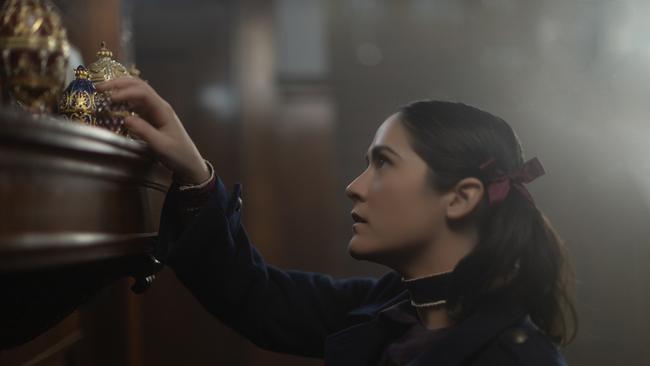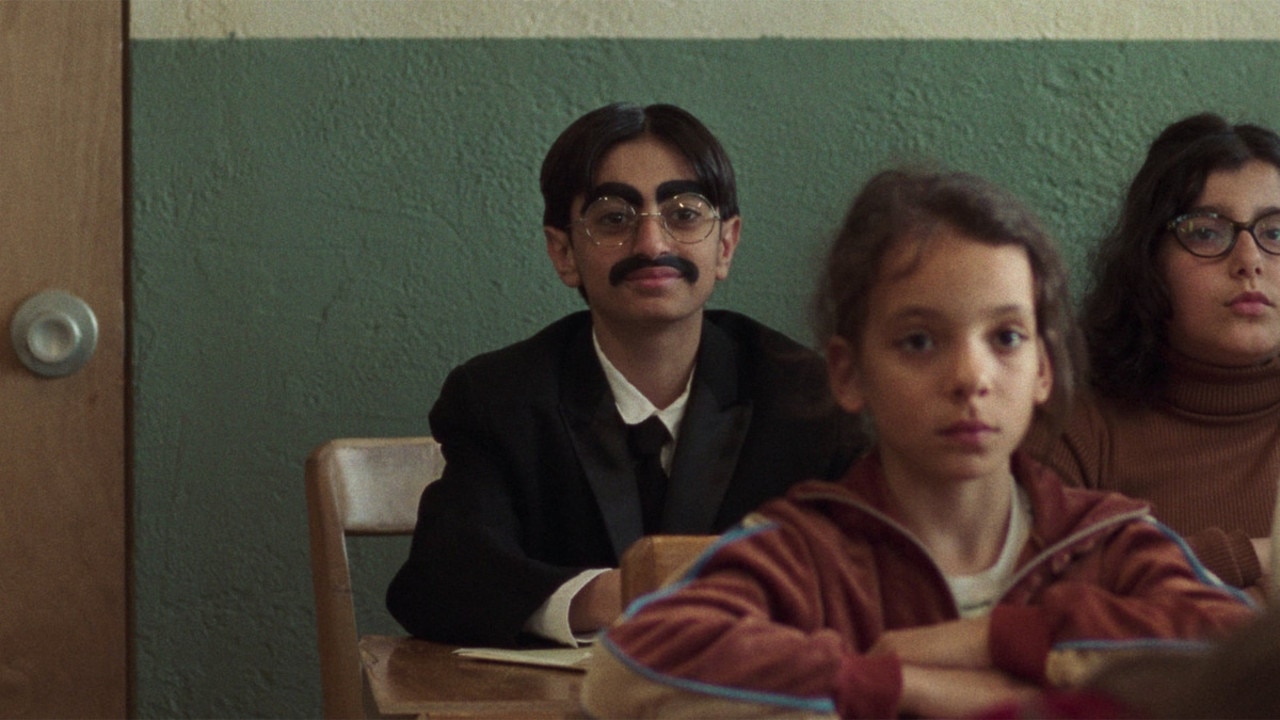Samaritan, Sly’s surprising take on superhero film
It’s fun to see 76-year-old Sylvester Stallone playing someone roughly his own age in Samaritan.

Samaritan (PG)
Amazon Prime
★★★
When it comes to guessing the plot twist in a movie, is it better to be right or wrong?
I suppose it depends on the film. Correctly guess the ending of the original Planet of the Apes and you’re smarter than the apes realise. Incorrectly guess the ending of The Alamo and you need to dust off the history books.
This thought came to mind as the teen co-viewer and I watched Sylvester Stallone’s latest action-adventure, Samaritan, directed by Australian filmmaker Julius Avery.
About a third of the way into the 100-minute run time, we shared the “I think I know what’s going to happen” look. Then we agreed we wanted it to happen and would be disappointed if it didn’t.
What we predicted and whether we were right or wrong I’ll hold back under the non-spoiler convention. What it made me ponder, afterwards, is that while endings are important, so is the journey towards them.
This is a superhero movie, which I know is kryptonite to some viewers. However, it’s a different superhero movie. It has similarities with Hancock (2008), starring Will Smith as a drunken, careless superhuman, and Logan (2017), with Hugh Jackman as a past-his-prime Wolverine. It is not as good as those films but the journey is still enjoyable.
Stallone is Joe Smith, a garbage truck worker in an unhappy American metropolis called Granite City. He lives alone and prefers it that way. His life changes when he befriends Sam (Javon “Wanna” Walton from the TV series Euphoria), a 13-year-old who lives in the apartment building across the road. Sam only has his mum (Dascha Polanco from Orange is the New Black), a nurse who struggles to pay the rent and faces eviction.
It is through Sam that we learn the pivotal backstory. Twenty-five years ago, the city was home to superhuman twin brothers: Samaritan, who did good, and Nemesis, who did bad.
Their power struggle, for which Nemesis armed himself with an all-powerful hammer, ended in a blaze of unglory as the battle scene became an inferno.
However, some people, including Sam, believe Samaritan is still alive. When he sees “old man” Joe run down by a car, he thinks he has found him.
“Are you okay,’’ he asks. “F--k no,’’ Joe replies but he rises, straightens his broken bones and walks on. It’s fun to see Stallone, 76, playing someone roughly his own age.
Joe wants to help Sam, who falls in with a bad mob led by Cyrus (Pilou Asbaek from Borgen and Game of Thrones), a Nemesis wannabe who steals that all-powerful hammer from a police lockup.
Yet Joe, if he is Samaritan, says some odd things. He tells his young pal that Samaritan protected the rich “while the rest of us went hungry”. Nemesis, on the other hand, beat up people “who needed a beating”.
Stallone is good as this conflicted blend of Rocky and Batman, with a bit of Thor thrown in. The script (Bragi F Schut) has its humorous moments.
Cyrus and his followers wear Nemesis masks as the city roils with unrest, and – as the dispossessed turn on the privileged – there are similarities to The Joker and the most recent Batman film (2022).
The Australian director and screenwriter gained attention with two short films, Jerrycan (2008) and Yardbird (2012), each of which screened at Cannes.
His debut feature was the Australian prison drama Son of a Gun (2014), with Ewan McGregor and Alicia Vikander in leading roles. Then followed the World War II horror movie Overlord (2018), produced by JJ Abrams, and now Samaritan, which Stallone produced. It seems his work is being noticed in the right places.
-
Orphan: First Kill (MA15+)
In cinemas from August 31
★★★½
The people behind the horror film Orphan: First Kill faced an age-old challenge: how to make someone look younger.
The star, American actor Isabelle Fuhrman, was 10 when she made the original movie, Orphan, which came out in 2009. She is now 25 and this follow-up is a prequel not a sequel.
That means Fuhrman, more than a decade older, is the same character: Esther, the evil pre-teen orphan of the title.
The original, directed by Jaume Collet-Serra, is set in about 2009. Esther is adopted from an American children’s home by an American family. As anyone who has seen the movie will know, what ensues is not The Brady Bunch. The reason? Esther, real name Leena, is in fact an adult who suffers from a hormonal condition that makes her look like a child despite the fact she is in her 30s. She’s also a murderous psychopath.
This prequel, directed by William Brent Ball and written by David Coggeshall, is set two years earlier. It opens by taking us back to where Leena came from: a psychiatric institution in Estonia.
She is, the institute director notes, “Our most dangerous patient.” She soon proves he’s a man of his word. Her escape comes with a due amount of bloodshed.
She scans the internet, finds a missing American child, Esther Albright, impersonates her and is soon reunited in Connecticut with mum Tricia (Julia Stiles), dad Allen (Rossif Sutherland) and 16-year-old brother Gunnar (Matthew Finlan).
The filmmakers decided not to use digital de-ageing effects but, as they put it, “old school movie magic”. So Fuhrman’s de-ageing was mainly down to make-up artist Doug Morrow and cinematographer Karim Hussain.
A body double was used in shots not showing the face and there were simple tricks to shrink Fuhrman, such as putting furniture on boxes and using magnum bottles of wine.
And her co-stars wore super high-heels – “Gene Simmons boots”, as Stiles, an apparent fan of the rock band Kiss, described them – so Fuhrman only came up to their waists. There is an amusing online photograph of the actors so attired.
This is interesting behind-the-scenes production detail but the main questions are does it work and is the movie good? Yes and yes.
As Esther, who does look like a little girl, settles into the family mansion, it does not take long for people to start doubting her. She makes mistakes. She misremembers the past.
Fuhrman is terrific in the moments where her child mask slips and the cold adult peeks out. The soundtrack joins in. As she drives a car while putting on lipstick and smoking a cigarette, we hear that one-hit wonder from Flashdance: Maniac.
Given the huge twist in the original – that the child orphan is an adult psycho – the filmmakers knew they would have to come up with a good one second time around.
It comes at the halfway point and it is a cracker. It changes the dynamic between all the family members. It makes us see them in a different light. As Gunnar tells his mother: “This is insane, even for us.”
The dialogue, good from the beginning, is first rate from this point. Suddenly we, the viewers, know more about each of the characters than they do about each other. It is chilling and funny at the same time.
While there is a fair bit of blood left on the walls, floor and elsewhere, this is more of a psychological thriller than a slasher flick, and is far the better for it.
There’s strong speculation there will be a third film in this series. Whether Fuhrman rewinds the clock even further to play Leena as a baby is something only time will tell.





To join the conversation, please log in. Don't have an account? Register
Join the conversation, you are commenting as Logout